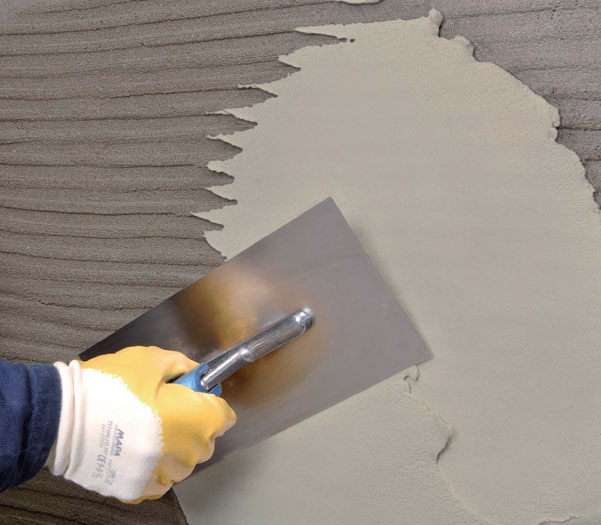Bridging gap with MC-additives

In the past one year, we introduced special additives that will bridge the gap between the current construction materials and the dry-mix industry.
Technology will be unparalleled
Technology has deeply touched every aspect of the construction industry in India. “Technology in construction works two-fold. Firstly on application technology that deals with mechanisation in the industry to actually construct the structure. Secondly on material technology that deals with new generation materials, which can facilitate faster, better and more durable construction,” notes Sunny Surlaker, Head Admixtures Division, MC-Bauchemie (India) Pvt Ltd.
With mechanisation for earthmoving, concrete production, placing and finishing to decorative finishes, India can proudly say, we are inching toward technology as advanced in the western world. Even as far as materials are concerned, we are at par with the world in terms of materials availability, be it the latest generation admixtures and additives, curing compounds, flooring systems, waterproofing systems, repair systems or construction ancillaries. The IT sector is tying in the different threads in order to bring in better controls on construction quality, time and costs.
While pointing out on how technology is transform construction industry he said, “We believe in a few years from now, with widespread knowledge of the interaction of new generation materials and application technologies, the proliferation of technology in the construction sector will be unparalleled as opposed to the rest of the world and will transform the way we build in India.”
Technology’s impact on construction industry
The construction chemical industry is more about evolution, rather than revolution. The product range that has cropped up over the years is now being segmented and reformulated for specific end uses. “Newer chemicals and raw materials available help us improve properties of the materials we manufacture,” states Surlaker.
“The innovations in the industry are coming by way of how we are using the materials, instead of focus on the material alone. Innovations today make easy work of application, are targeting more robustness in the products and are looking at cost effective solutions,” observes Surlaker.
For example, admixtures are evolving in robustness to meet the challenges of availability of a constant source of sand and differing cements, waterproofing is seeing a lot of spray applied materials for better coverage and faster work, repair mortars can now be more easily handled thanks to new materials and minerals available, flooring has been revolutionised by availability of special resin based systems for protection of concrete.
“The impact on the construction industry is that we can build faster, better and more durable structures, with minimal maintenance and a green footprint for a more sustainable future,” adds Surlaker.
Special additives
Dry-mix systems, be it in the form of plasters, mortars, waterproofing or flooring are coming into vogue to make the construction faster, easier and less complicated. “The requirement of the industry to have simple to use system is governing this trend. However, costs do have an effect in pushing the widespread use of these types of materials,” notes Surlaker.
Keeping in mind these trends, the company has introduced in the past one-year special additives that will bridge the gap between the current construction materials and the dry-mix industry. Instead of using multiple additives to enhance properties of mortars, it has come up with a single additive system for mortars. An example is the MC-Plaster additive system for improvement of wall plasters for external finishing of structures.
MC-Plaster additive is an additive for large scale production of plaster, imparting stability, water retention, non-sagging, and bonding properties to plaster.
Dampness entering the living space (especially through walls and ceilings) is an indication that the structure has failed its durability and that structural elements have already begun deteriorating. With high demands on durability, the thought process should turn to preventing water ingress through the living space, by providing the correct plaster as an envelope to the building. This method ensures that the structure is protected against water ingress and the structure is protected from failure through its design life.
MC-Plaster additive is a combination of selected additives designed to impart the produced plaster with specific properties relating to resistance to water penetration, stability, non-sagging property, open time, workability and water-retention. The solution can be customised for a variety of plaster options. The mix is to be mixed in a high mixing efficiency dry-mix production mixer for dispersing all the chemical ingredients suitably. Dosage is economical at 0.1 to 0.4 per cent by weight of the dry-mix or 0.5 to 1.0 per cent by weight of cement.
External building plasters are the first line of defence in providing the external envelope to the building walls. Plastering the external walls in the building, today involves multiple problems on its own. These include good quality cement, availability of good quality natural sand, wastage on account of plastering practices, and skilled labour for application.
MC-Bauchemie, sought to address the plastering from the material point of view. It’s plaster additives combine many benefits into one well designed judicious product, which improves water proofing, water reduction, excellent bonding, even to concrete blocks, Thixotropy and many more properties in any wall or ceiling plaster.
This material can be used universally for site applications (site-made plaster) or by dry-mix mortar manufacturers. It can also be used by masonry cement manufacturers to enhance the properties of plaster or similar mortars.
This solution has the robustness to convert any mortar, to a sprayable, easily finishable, durable wall plaster. The robustness of this formulation, allows it to be used with multiple raw material sources including crushed sand, manufactured sand, GGBSF, flyash, natural sand, PPC and other base raw materials for plaster. “We believe this material to be an excellent bridge between making site mixed mortars to manufacturing excellent dry-mix mortars. It is a product that meets a niche, but widespread need in the construction industry for external finishing of structures,” states Surlaker.
Cookie Consent
We use cookies to personalize your experience. By continuing to visit this website you agree to our Terms & Conditions, Privacy Policy and Cookie Policy.









